-
 Bitcoin
Bitcoin $114800
-3.31% -
 Ethereum
Ethereum $3641
-5.84% -
 XRP
XRP $2.948
-6.36% -
 Tether USDt
Tether USDt $0.9998
-0.03% -
 BNB
BNB $772.4
-3.97% -
 Solana
Solana $169.1
-6.68% -
 USDC
USDC $0.9999
-0.01% -
 Dogecoin
Dogecoin $0.2056
-8.09% -
 TRON
TRON $0.3247
-0.18% -
 Cardano
Cardano $0.7239
-7.43% -
 Hyperliquid
Hyperliquid $39.71
-8.60% -
 Stellar
Stellar $0.3912
-7.84% -
 Sui
Sui $3.510
-10.17% -
 Chainlink
Chainlink $16.59
-8.03% -
 Bitcoin Cash
Bitcoin Cash $560.5
-3.65% -
 Hedera
Hedera $0.2464
-10.08% -
 Avalanche
Avalanche $22.03
-7.87% -
 Ethena USDe
Ethena USDe $1.001
-0.02% -
 UNUS SED LEO
UNUS SED LEO $8.947
0.21% -
 Toncoin
Toncoin $3.389
-2.58% -
 Litecoin
Litecoin $104.9
-5.23% -
 Shiba Inu
Shiba Inu $0.00001220
-6.67% -
 Polkadot
Polkadot $3.652
-6.10% -
 Uniswap
Uniswap $9.213
-9.05% -
 Monero
Monero $307.2
-2.93% -
 Dai
Dai $0.9998
-0.02% -
 Bitget Token
Bitget Token $4.367
-2.89% -
 Cronos
Cronos $0.1374
-6.80% -
 Pepe
Pepe $0.00001056
-8.65% -
 Aave
Aave $257.3
-7.31%
What is the formula for the EMA indicator?
The Exponential Moving Average (EMA) prioritizes recent price data, making it ideal for spotting trends in fast-moving crypto markets like Bitcoin and Ethereum.
Jul 30, 2025 at 09:22 pm
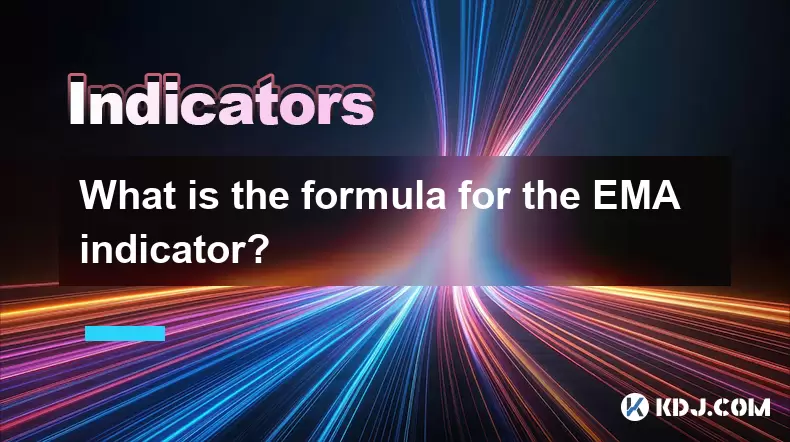
Understanding the EMA Indicator and Its Purpose
The Exponential Moving Average (EMA) is a widely used technical analysis tool in the cryptocurrency trading space. Unlike the Simple Moving Average (SMA), which assigns equal weight to all data points in a given period, the EMA places greater emphasis on recent price data, making it more responsive to new information. This responsiveness makes the EMA particularly useful in fast-moving markets such as Bitcoin or Ethereum, where price trends can shift rapidly. Traders use the EMA to identify trend direction, spot potential reversals, and generate buy or sell signals when combined with other indicators.
Breaking Down the EMA Formula
The mathematical formula for calculating the EMA is:
EMA = (Price_today × k) + (EMA_yesterday × (1 – k))
Where:
- Price_today is the current closing price of the asset.
- k is the smoothing factor, also known as the multiplier.
- EMA_yesterday is the EMA value from the previous period.
The key differentiator of the EMA from other moving averages lies in the smoothing factor (k), which determines how much weight is assigned to the most recent price. The formula for k is:
k = 2 / (N + 1)
Here, N represents the chosen period (e.g., 9-day, 12-day, or 26-day EMA). For example, in a 12-day EMA, k = 2 / (12 + 1) = 2 / 13 ≈ 0.1538. This means that approximately 15.38% of the current EMA value is derived from today’s price, while the remaining 84.62% comes from the previous EMA value.
Step-by-Step Calculation of the EMA
To accurately compute the EMA, follow these steps:
- Select the time period (N) for the EMA (e.g., 9 days).
- Calculate the smoothing factor (k) using k = 2 / (N + 1).
- Compute the Simple Moving Average (SMA) for the first N periods. This SMA serves as the initial EMA value.
- Apply the EMA formula starting from the (N+1)th period onward.
- Use the previous EMA value in each subsequent calculation.
For example, to calculate a 9-day EMA:
- First, calculate the 9-day SMA using the closing prices of the first 9 days.
- Use that SMA as the EMA for day 9.
- On day 10, apply the formula:
EMA_10 = (Price_10 × (2 / 10)) + (EMA_9 × (1 - 0.2)) - Repeat this process for each new day.
This recursive nature ensures that every new EMA value incorporates all prior price data, with recent prices weighted more heavily.
Practical Application in Cryptocurrency Trading
In crypto trading platforms like Binance, Bybit, or TradingView, the EMA is often pre-calculated and displayed on price charts. However, understanding the underlying formula allows traders to customize settings and interpret signals more effectively. Common EMA combinations include:
- EMA 9 and EMA 21 for short-term trend analysis.
- EMA 50 and EMA 200 for identifying long-term market direction.
A golden cross occurs when a short-term EMA (e.g., 50) crosses above a long-term EMA (e.g., 200), signaling a potential bullish trend. Conversely, a death cross happens when the short-term EMA drops below the long-term EMA, indicating bearish momentum. These signals are frequently used in Bitcoin and altcoin trading strategies.
Configuring EMA on Trading Platforms
Most trading platforms allow users to add the EMA indicator through a few simple steps:
- Open the chart for a cryptocurrency pair (e.g., BTC/USDT).
- Click on the "Indicators" button or search bar.
- Type "Exponential Moving Average" and select it.
- Choose the period (N), such as 9, 12, or 26.
- Adjust the color and line thickness for visual clarity.
- Apply the indicator to the chart.
Some platforms also allow setting multiple EMAs simultaneously. For instance, adding both EMA 12 and EMA 26 helps in constructing the MACD indicator, which is derived from the difference between these two EMAs. This integration enhances the ability to detect momentum shifts in volatile crypto markets.
Common Misconceptions About EMA
A frequent misunderstanding is that the EMA only considers recent prices. In reality, the EMA uses all historical data, but with exponentially decreasing weights. Another misconception is that a shorter EMA is always better. While a 3-day EMA reacts quickly, it may generate false signals due to market noise. Conversely, a 100-day EMA is smoother but may lag significantly during sharp price movements. Traders must balance responsiveness and reliability based on their strategy and time frame.
Frequently Asked Questions
Q: Can the EMA be applied to time frames other than daily?
Yes, the EMA can be calculated on any time frame, including 1-minute, 1-hour, 4-hour, weekly, or monthly charts. The formula remains the same; only the input prices change based on the selected interval. For example, a 9-period EMA on a 1-hour chart uses the last 9 hourly closing prices.
Q: How is the first EMA value determined?
The first EMA value is typically the Simple Moving Average (SMA) of the first N periods. This provides a stable starting point before the recursive EMA calculation begins. Without this initial SMA, the EMA cannot be computed for the next period.
Q: Why is the smoothing factor (k) calculated as 2 / (N + 1)?
This formula ensures that the EMA gives appropriate weight to recent prices while maintaining mathematical consistency. It was derived to make the EMA respond to price changes in a way that approximates an exponential decay function, where older data diminishes in influence over time.
Q: Is the EMA suitable for sideways or ranging markets?
In ranging markets, the EMA may produce whipsaw signals due to price oscillations around the moving average. Traders often combine the EMA with oscillators like RSI or Bollinger Bands to filter out false breakouts and improve decision accuracy.
Disclaimer:info@kdj.com
The information provided is not trading advice. kdj.com does not assume any responsibility for any investments made based on the information provided in this article. Cryptocurrencies are highly volatile and it is highly recommended that you invest with caution after thorough research!
If you believe that the content used on this website infringes your copyright, please contact us immediately (info@kdj.com) and we will delete it promptly.
- Bitcoin, Ethereum, and Investor Behavior: A New York Minute on Crypto Trends
- 2025-08-01 15:10:12
- Tether's Q2 Triumph: USDT Supply Soars Amidst Profit Surge!
- 2025-08-01 15:10:12
- Ethereum ETF Holdings: A Corporate Treasury Revolution?
- 2025-08-01 15:30:12
- Ethereum's Wild Ride: Funding Rates, Price Drops, and Retail to the Rescue!
- 2025-08-01 15:30:12
- Ethereum Under Pressure: Crypto Market Drop Explained
- 2025-08-01 15:35:11
- Ethereum ETF Mania: Inflows Surge, Market Rises, What's Next?
- 2025-08-01 15:35:11
Related knowledge

What is the difference in KDJ signal interpretation between a trending and a ranging market?
Aug 01,2025 at 03:56pm
Understanding the KDJ Indicator in Cryptocurrency TradingThe KDJ indicator is a momentum oscillator widely used in cryptocurrency trading to identify ...

Does the KDJ indicator work well for low-liquidity crypto assets?
Aug 01,2025 at 02:01pm
Understanding the KDJ Indicator in Cryptocurrency TradingThe KDJ indicator is a momentum oscillator derived from the Stochastic Oscillator, widely use...
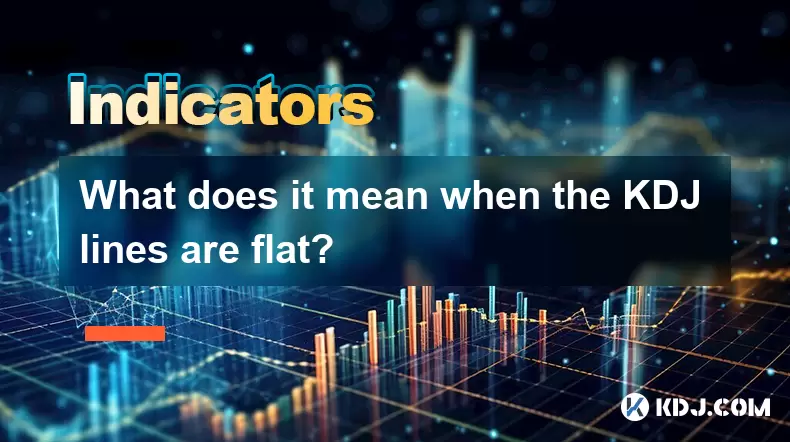
What does it mean when the KDJ lines are flat?
Aug 01,2025 at 03:22pm
Understanding the KDJ Indicator in Cryptocurrency TradingThe KDJ indicator is a momentum oscillator widely used in cryptocurrency technical analysis t...
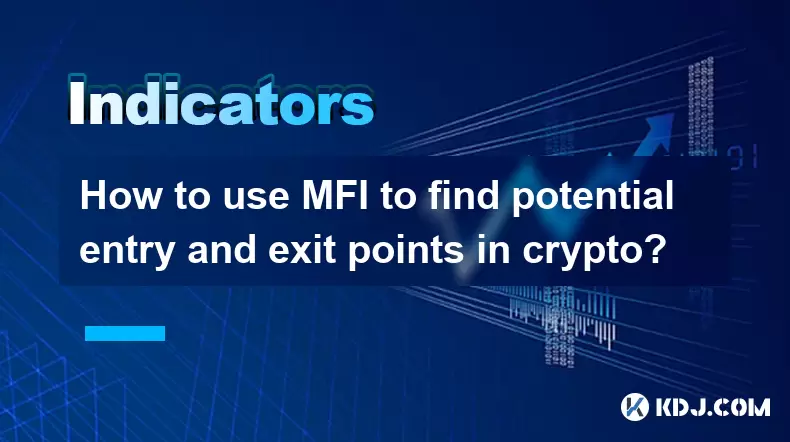
How to use MFI to find potential entry and exit points in crypto?
Aug 01,2025 at 02:35pm
Understanding the MFI Indicator in Cryptocurrency TradingThe Money Flow Index (MFI) is a momentum oscillator used to measure the strength and directio...
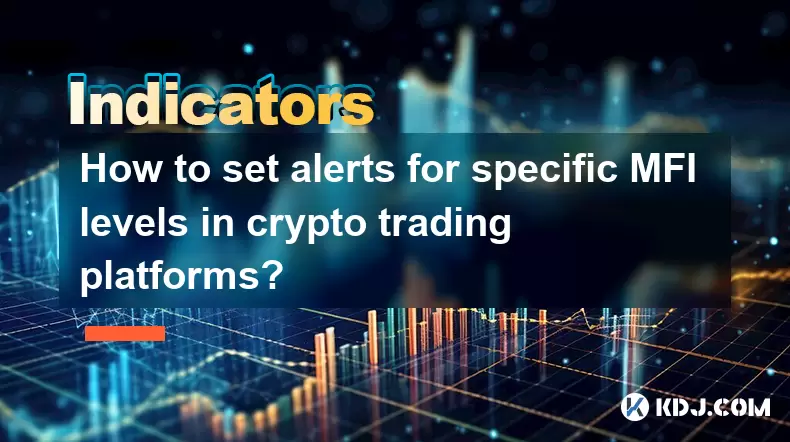
How to set alerts for specific MFI levels in crypto trading platforms?
Aug 01,2025 at 12:42pm
Understanding the Money Flow Index (MFI) in Crypto TradingThe Money Flow Index (MFI) is a momentum oscillator that measures the flow of money into and...
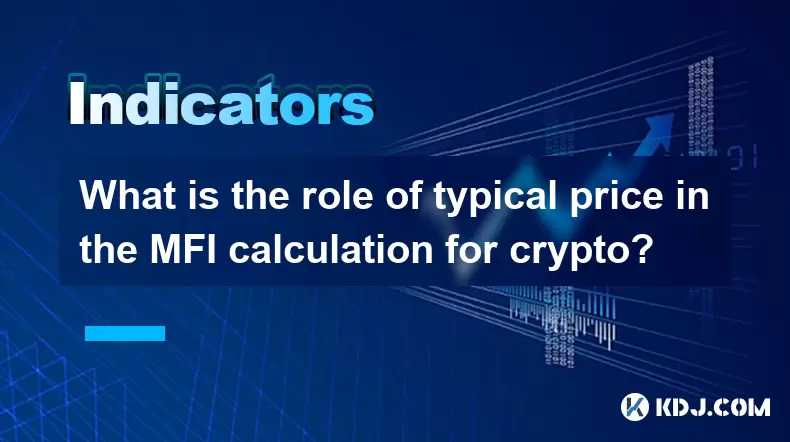
What is the role of typical price in the MFI calculation for crypto?
Aug 01,2025 at 12:21pm
Understanding the Typical Price in MFI for Cryptocurrency AnalysisThe Typical Price plays a crucial role in the calculation of the Money Flow Index (M...

What is the difference in KDJ signal interpretation between a trending and a ranging market?
Aug 01,2025 at 03:56pm
Understanding the KDJ Indicator in Cryptocurrency TradingThe KDJ indicator is a momentum oscillator widely used in cryptocurrency trading to identify ...

Does the KDJ indicator work well for low-liquidity crypto assets?
Aug 01,2025 at 02:01pm
Understanding the KDJ Indicator in Cryptocurrency TradingThe KDJ indicator is a momentum oscillator derived from the Stochastic Oscillator, widely use...

What does it mean when the KDJ lines are flat?
Aug 01,2025 at 03:22pm
Understanding the KDJ Indicator in Cryptocurrency TradingThe KDJ indicator is a momentum oscillator widely used in cryptocurrency technical analysis t...

How to use MFI to find potential entry and exit points in crypto?
Aug 01,2025 at 02:35pm
Understanding the MFI Indicator in Cryptocurrency TradingThe Money Flow Index (MFI) is a momentum oscillator used to measure the strength and directio...

How to set alerts for specific MFI levels in crypto trading platforms?
Aug 01,2025 at 12:42pm
Understanding the Money Flow Index (MFI) in Crypto TradingThe Money Flow Index (MFI) is a momentum oscillator that measures the flow of money into and...

What is the role of typical price in the MFI calculation for crypto?
Aug 01,2025 at 12:21pm
Understanding the Typical Price in MFI for Cryptocurrency AnalysisThe Typical Price plays a crucial role in the calculation of the Money Flow Index (M...
See all articles

























































































